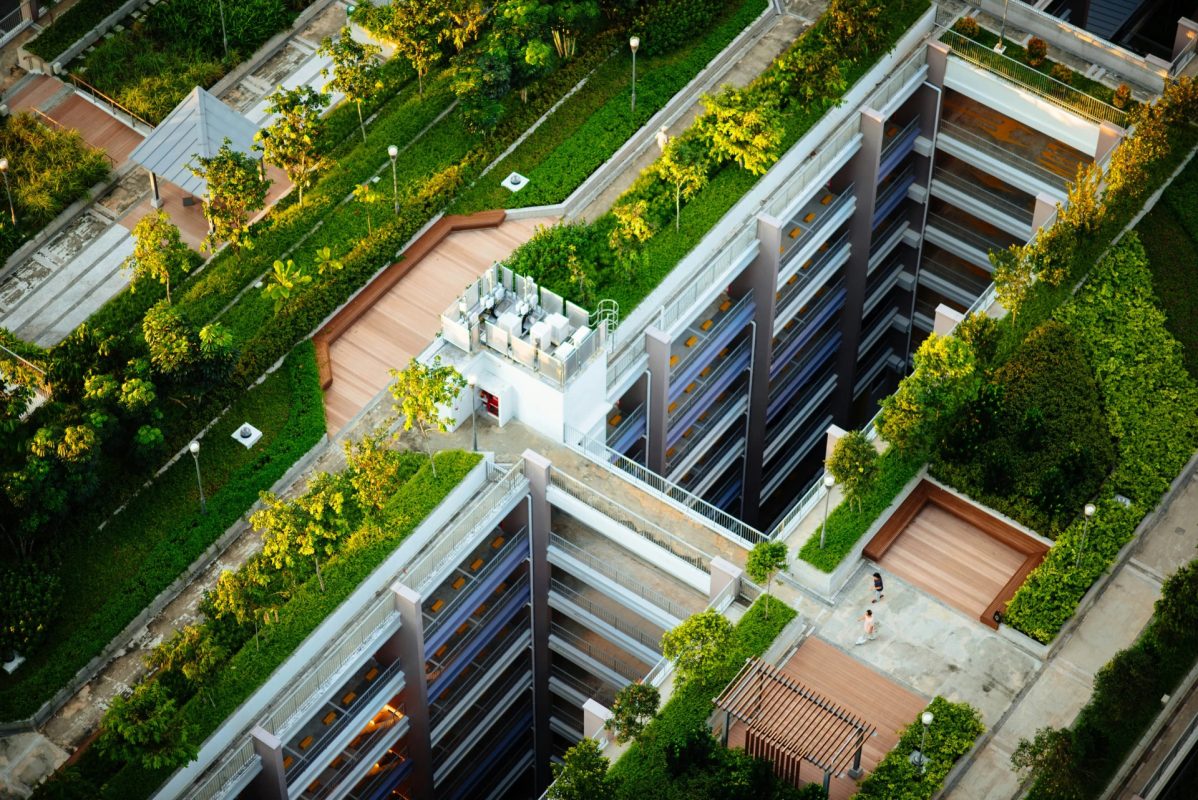Global climate change and the growing need for sustainability have become one of the most pressing challenges facing the construction industry today. Greening responsible architectural practices and the operation of buildings is no longer an option but a necessity. In this context, the LEED and BREEAM certification schemes, as well as ESG (Environmental, Social, Governance) aspects, are prominent. In this article, we describe them in detail and look at how they can help in the field of eco-design and architecture.
Sustainable design and construction is the future
Sustainability is increasingly becoming a focus in the construction industry, which is important because buildings are responsible for 37% of carbon emissions. All actors in the value chain need to do their utmost to reduce this to as close to zero as possible – if not in the short term, then certainly in the long term. Green technologies also have a positive impact on the well-being of building occupants, such as occupancy-based air filters that switch to a higher setting depending on the number of people in a room.
BREEAM, LEED and other rating systems allow an objective assessment of the sustainability level of buildings. They provide clear guidance on what designers and developers should consider when building. Sustainable design and construction is not only in the interest of the present but also of future generations and is of growing importance for building a sustainable future.
The BREEAM scheme
The BREEAM (Building Research Establishment Environmental Assessment Method) is a thorough and detailed rating system that allows an objective assessment of the sustainability and environmental performance of buildings. The system looks at a number of different areas, including energy efficiency, water use, environmental pressures and a healthy environment. BREEAM aims to encourage those working in the construction industry to adopt sustainable solutions and to help make the built environment more sustainable.
The LEED certification system
LEED (Leadership in Energy and Environmental Design) is an internationally recognised green building certification programme developed by the US Green Building Council (USGBC). The system evaluates buildings for energy efficiency, optimizing water use, reducing CO2 emissions, improving the quality of the indoor environment, and managing resources responsibly.
The importance of ESG in the construction industry
Both BREEAM and LEED, as well as other certification schemes, fit into the ESG (Environmental, Social, Governance) criteria. These are increasingly coming to the fore in the construction industry when it comes to sustainability and environmental solutions. The integration of ESG considerations into project management and construction practices is of particular importance as investors, tenants and end-users increasingly prioritise sustainability. Assessing against ESG criteria helps companies to assess the environmental and social impacts of their activities and management practices.
Environmental aspects include energy use, waste management and carbon emissions. Social criteria focus on human rights, living conditions of the workforce and community involvement. The Governance factors cover ethical business conduct and anti-corruption rules.
The impact of environmentally sound solutions on human health and well-being
Green solutions have many positive effects on human health and well-being. Such solutions help reduce environmental pressures, minimise waste and optimise resource use. In doing so, they contribute to better air quality, more appropriate temperature conditions and a healthier working environment in buildings. In addition, sustainable solutions contribute to the psychological well-being of occupants and workers, who experience a better sense of well-being in such environments.
BREEAM, LEED and ESG = benefits for all
LEED and BREEAM certifications, as well as ESG criteria, not only provide recognition for sustainable activities, but also offer significant economic benefits to the construction industry. A highly certified building can not only be operated with lower overheads, but can also achieve higher rental and sales prices while reducing its ecological footprint. In this way, building operators not only play an active role in environmental sustainability and social responsibility, but also benefit commercially from the use of the latest technologies.

